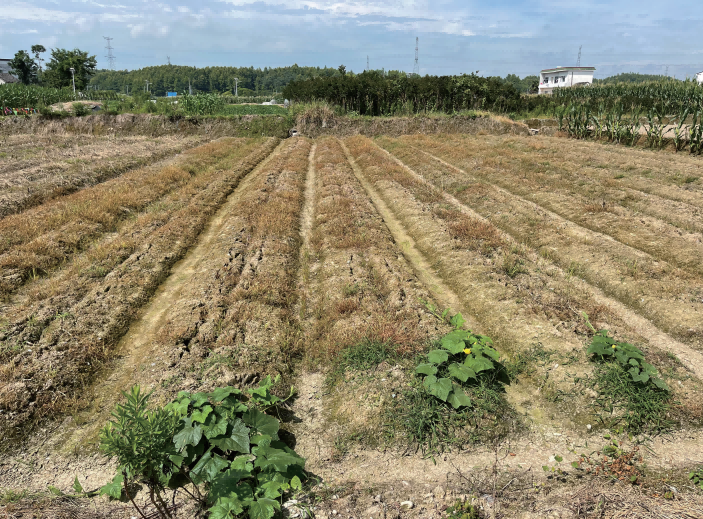修改写在大地上的文章——2022年北京大学建筑与景观设计学院毕业典礼上的致辞
- 摘要:
- 本文为笔者在2022年北京大学建筑与景观设计学院毕业典礼上的致辞。远离大都市,笔者得以观察并描绘出如下乡土景观变迁情况:滥用农药和河渠裁弯取直、硬化导致土壤板结,泥鳅、黄鳝、青蛙等生物消失,水源、河道污染严重;古镇中原有的乡土文化遗产被抚毁,重建后的古镇中充斥着大量装饰性景观、仿古楼台和器具符号,试图彰显其美学价值、历史意义和文化特色。笔者为这些“书写在大地上的文章”而感到希愧,并勉励毕业生们在未来的职业生涯中努力“修改写在大地上的文章”。 This article is the author’s commencement speech at 2022 Graduation Ceremony of the College of Architecture and Landscape, Peking University. Away from the cities, the author observed, experienced, and recorded the changes in vernacular landscapes: pesticide abuse and cutoff and channelized rivers have resulted in soil hardened, loaches, eels, frogs, and other creatures disappeared, and rivers and water sources seriously polluted; while demolishing the vernacular cultural heritage of the ancient town, the reconstructed one is built with a large number of ornamental, ancient looking structures, and stereotyped symbols, mirroring the shallow understanding of aesthetic, historical, and cultural identities. Metaphorically, the author is so ashamed of these “articles written on the land” and encourages the graduates to revise them in the future with their knowledge of ecology and aesthetics.
文章来源:俞孔坚. (2022). 修改写在大地上的文章——2022年北京大学建筑与景观设计学院毕业典礼上的致辞. 景观设计学(中英文) 10(02), pp.5-8+4.

亲爱的同学们,热烈祝贺在2022年毕业的所有硕士生和博士生,你们今天离开燕园,意味着开始一个新的人生篇章,也意味着社会将期待你们能对人类进步有所贡献!
关于知识分子的贡献,最近开始流行起"在大地上书写论文"的说法,这本该是建筑与景观设计学院毕业典礼上最恰当的致辞,可惜已经被泛滥挪用,不足以标榜真正改天换地的职业。今天,我将“修改写在大地上的文章”赠予从这个学院走出去的和将要走出去的才俊们,没有任何其他学院的毕业生比你们更需要这样的共勉!
值此又一波疫情袭击北京之际,我被迫停留在远离大都市的远方. 也因此得以有时间行走在大地上,仔细阅读那些写在大地上的文章。
我在田野上行走,那田野曾经是我少年时劳作过的地方。赤脚,我穿越那方养育过我的水田,本期待能踩到泥土中滑溜溜的泥鳅和黄鳝,感受它们钻过脚掌心时那直透心底的痒痒。我还期待在那薄薄的水面上,众多硕大的青蛙昂着头,它们凸出的眼睛就像那三星堆出土的面具那样,在被踩到的刹那,突然潜入浅水面下的淤泥。但我失望了,那些熟悉的感觉始终没有出现,泛滥的农药和除草剂早已将它们连同千百种昆虫一起杀灭。在我的面前,这绵延却缺乏生命、板结而坚硬、混杂着建筑垃圾和塑料的土壤,刺痛了我的脚掌。
我沿着河流行走,跟随那河流穿过田野和山峦,一直走到长江支流最上游的山谷。我本以为能有一路的清流与鸟声相伴,鱼翔浅底、绿茵如带,直至源自山崖的甘泉。可是我失望了,更多的时候我只见到曾经蜿蜒的溪流已被裁弯取直,水泥钢筋的防洪堤和一道道拦水坝将其变成僵尸般的水渠。那硬化的包裹甚至沿着从两岸汇入的支流和灌渠,一直延伸到山脚下的涓涓细流处;娇艳的园林花木装点着瓷砖和汉白玉砌就的花坛。那包裹严丝合缝,不留鱼虾栖居之缝隙,也不留可降解污染物的植被。因此,我看到河道和两岸的水塘湿地布满了各种浮游藻类,并散发出臭味——来自农田的污染已经毒化了河湖的水源。
我循着古镇的街道走去,那古镇有一千多年的历史,这里水陆交汇,曾经富甲一方,文化灿烂。我本以为能沿着记忆中的石板古道行走,感受穿过水口林时的阴凉,听到在古樟树栖息的几十种鸟儿的欢唱,还有那掩映在茂林修竹中的白墙黑瓦、古道两侧丰产的田园和烟雨中的炊烟。但是,我又失望了!因为水口已不复存在,那沾满青苔的古树也已经不在,水泥大道切开了关闽水口,一串串红灯笼沿路挂在“青龙偃月刀”形的灯柱上,一直通到村口的阔大广场。超大尺度的亭台楼阁此起彼伏,夸张的马头墙林立,拆掉了真实古镇后又重金打造的"再造古镇"魏然矗立。在这里,"美丽"被理解为涂脂抹粉和乔装打扮,“历史”被理解为仿古楼台,“文化特色”被理解为器具符号。
我在大地上行走,细读那由一个个景观构成的环境之书。这本书的内容还有很多,许多时候我不忍正视。我从事在一个确实在大地上书写文章的职业,常常自豪地推动轰轰烈烈的自然改造行动,却也深忧于大地上这已经写就的一篇篇文章。
我因此而赠言于你们,该轮到你们书写—更确切地说,修改这些文章了。请记住,那将代表你们在这里所得到和发展的学术,尤其是关于生态的学识和智慧,更代表了你们在这里所锤炼的关于美丽的鉴赏力。
Revising Articles Written on the Land—Commencement Speech at 2022 Graduation Ceremony of the College of Architecture and Landscape, Peking University
Dear master’s and PhD students, congratulations on your graduation! Today, you are leaving the university and starting a new chapter in your life. The society looks to you to make a contribution to the progress of humanity!
As for the contribution of intellectuals, the popular phrase “writing articles on the land” might be the best words for the graduates from the College of Architecture and Landscape, but it has unfortunately been used too often to be a praise for landscape architects, professionals who are trained to design and shape the land. Today, I commend “revising articles written on the land” to all the graduates and students in this college, and I believe no graduate from other colleges is more appropriate for this calling than you are!
During the current pandemic outbreaks in Beijing, I have to stay far away from the metropolis, which gave me the time to walk and read the “articles written on the land already.”
I walked on the farmland where I had played and worked in my childhood. Barefoot, I walked through the paddy fields while expecting to step on some slippery loaches and rice field eels in the mud and feel the itch as they crept on my feet; expecting to find fat frogs holding their heads up above shallow waters, with bulging eyes just like the ones on the bronze mask from Sanxingdui Ruins; once stepped on, the frogs would suddenly dive into the mud. But I was disappointed that none of such scenes appeared. The abuse of pesticides and herbicides has killed most creatures, along with hundreds of insects. My feet were stung by this stretch of lifeless, hardened soil mixed with construction waste and plastics.
I walked along the river, across the fields and hills, and arrived at an upper-reach valley of one of the Yangtze’s tributaries. I was expecting to meet a clear stream, singing birds, swimming fish, flourishing forests, and fresh springs. But I was disappointed too. More often than not, I found the once meandering watercourse replaced with cutoff, hardened channels, and teared into several sections by levees and dams made of concrete and steel. The same goes for the sub-tributaries, irrigation ditches, and even foothill trickles. Ornamental flowers are planted in delicate parterres along the riverfront. Such hardened ditches destroy habitats for fish and shrimp and aquatic vegetation that can degrade pollutants. As a result, the rivers and ponds along the banks are smelly with overgrown and overspread algae—pollution from farmland has also poisoned the water source of local rivers and lakes.
I walked through the lanes and allays of an ancient town built a thousand years ago. Benefited from its rich water resources, the town was prosperous and splendid, both economically and culturally. I was expecting to follow the ancient stone paving allays in my memory, to have a shaded rest in Shuikou (village water inlet/outlet) forests, to hear the chorus of diverse birds on the old camphor trees, and to enjoy the view formed by white walls and black tiles hidden behind trees and bamboos, the productive orchards on both sides of the paths, and the smoke of the cooking fires in the rain. But, again, I was disappointed! Both Shuikou and the moss-strewn old trees are disappeared.Instead, cement roads separate water outlets, with strings of red lanterns hanging on lampposts in an exaggerated shape, and connect an oversized square at the entrance of the village. After demolishing the authentic ancient town, a new one was created on the same site with huge investment, where numerous buildings and structures, such as pavilions and the horse-head walls, are clustered. Here, “beauty” is interpreted as creating ornamental sceneries, “history” as forming ancient-looking images, and “cultural identity” as introducing stereotyped symbols.
I walked on the land, perusing the “book” consisted of various “articles.” There is so much more to this book that many times I cannot bear to look at it. I am so ashamed to be in the same profession with the ones who have created so many ignorant and hideous landscapes on the land—landscape architects should write “articles” that can truly and profoundly promote environmental improvement of the land.
Our future landscape architects, it is your time to write, or rather, to revise these articles written on the land. Please remember that the articles you write will represent your knowledge, especially your wisdom about ecology and aesthetics you have learned and developed in this university.
